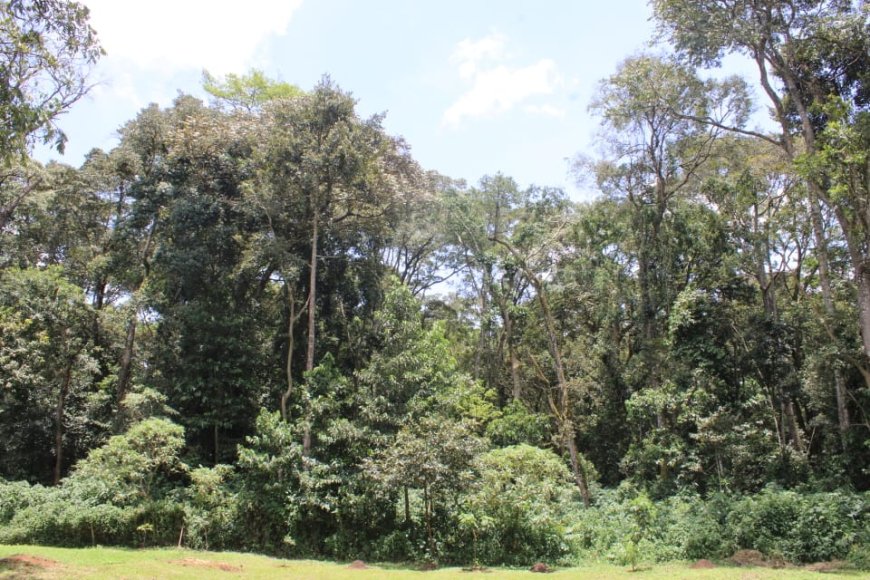Kakamega Forest Fencing Is Set To Enter Phase 2 Amidst Community Engagement Concerns
The ambitious fencing initiative, led by Rhino Ark in collaboration with the National Ministry of Environment and the County governments of Kakamega and Vihiga, aims to protect the precious ecosystem from intensified human encroachment.

By Sharon Ambani
As the second phase of fencing the Kakamega Rainforest is set to kick off in April, a blend of excitement and concerns looms over the project, with the local community and environmental justice activists eager to play a more active role in the project’s progress.
In a significant financial boost, Kakamega County Governor Fernandez Barasa revealed that the county has accumulated ninety-five million Kenyan shillings towards the fencing project.
"We have mobilised 95 million Kenyan shillings this year towards the second phase of fencing Kakamega Forest,” said Governor Barasa.
Governor Barasa noted that the first phase, which cost about twenty-five million Kenyan Shillings, successfully secured 15 kilometres of the forest's perimeter. He added that the upcoming second phase, expected to start next month, will extend the fence to cover an additional 35 kilometres.
The ambitious fencing initiative, led by Rhino Ark in collaboration with the National Ministry of Environment and the County governments of Kakamega and Vihiga, aims to protect the precious ecosystem from intensified human encroachment.

Enviroment Cabinet Secretary Soipan Tuiya and Kakamega Governor Fernandes Barasa witness the installation of an electric fence at Kakamega Forest, Isecheno KFS camp on Friday, February 24, 2023.
“The fencing is expected to secure the only tropical rainforest in this region, home to various rare animal and plant species. It will protect the ecosystem from encroachment and illegal logging. We also have a program where we target to plant more than 1 million trees this year alone to restore our natural resources,” he said.
Barasa further revealed partnerships with other key development stakeholders, including the United Nations Development Program (UNDP) and the Japanese government, who he said have expressed their commitment to supporting the initiative and providing communities living around the forest with alternative energy.
Despite the evident progress, concerns have been raised by the local community living around the Kakamega Forest. The Muileshi Community Forest Association, through its chairperson, Joseph Mbai, has expressed the community's desire for more involvement in the project.
“Although we were initially consulted when the fencing started, we feel excluded from the ongoing process. We advocate for transparency. We want the financial aspects of the project to be communicated through the CFA channels,” said Mbai.
However, not all environmental advocates are in favour of the natural resource’s fencing initiative. Environmental justice activists from the Defenders Coalition, an umbrella body of human rights defenders, have raised their objections, suggesting that the fence might disrupt animal migration corridors and potentially separate the vital connection between the forest and its surrounding community.
“These fences are blocking freedom for animals and people. It will impact the ecosystem, in that, there may be migrating animals, so when you fence, you are interfering with their corridor. You are also alienating communities from the forest when you fence it. They may feel they are no longer part of it. The fences should be removed so that the people living there can care for the forest better than those who want to isolate it for whatever reason. It is imperative to observe ecological justice in our struggle to find justice in our country,” noted Grace Oloo and Bonface Akach.
Speaking during a press release session after planting tree seedlings in Kakamega Forest, the environmental activists proposed an alternative approach focusing on community awareness and economic empowerment to protect and conserve the forest.
Furthermore, they expressed concerns about First-lady Rachel Ruto's initiative of adopting 200 hectares of the Kakamega Forest land for restoration, speculating that if not well articulated, such moves may raise issues of undisclosed financial interests by some individuals.
“We heard that our First Lady has adopted the forest. We need to know what her intentions are and what she is going to do with the forest. As an environmentalist and with the issue of climate change, I am starting to think that maybe carbon trading could be her interest in adopting the forest, which is dear to the community. We want to look at this adoption issue, whether it is a matter of going to Kenya Forest Service (KFS) and getting the go-ahead to adopt the forest. Can it be made more public and open to the community? The surrounding community elders need to be consulted when adoption is happening to avoid things like secret mining of minerals and carbon trading,” said Oloo.
As the fencing project progresses into its second phase, the delicate balance between environmental conservation and community engagement remains a focal point, emphasising the need for open dialogue and collaboration among all stakeholders involved.







